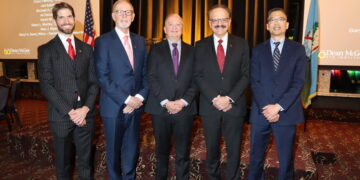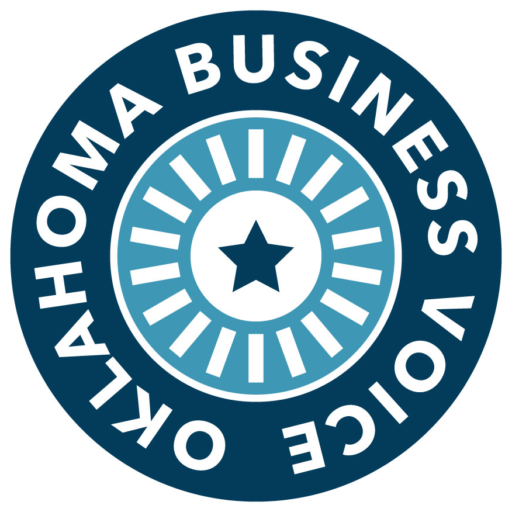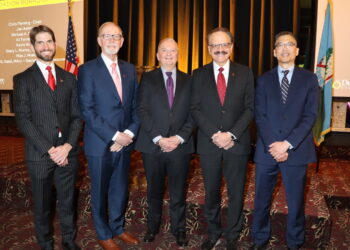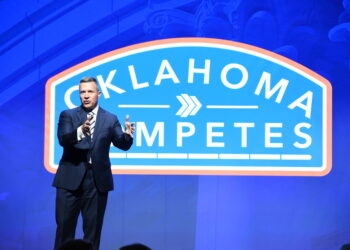OKLAHOMA CITY (OBV) – A petition is being circulated in Oklahoma to get a ballot initiative to raise the state’s minimum wage on the November election ballot, but Bureau of Labor Statistics data shows that a large percentage of Oklahoma workers already earn above the current minimum wage.
State Question 832 seeks to amend the Oklahoma Minimum Wage Act and increase the minimum wage by untying the state from the federal minimum wage. The amendment, if approved, would require employers to pay employees at least $9 per hour beginning in 2025, $10.50 per hour beginning 2026, $12 per hour beginning in 2027, $13.50 per hour beginning in 2028 and $15 per hour beginning in 2029. The wage will increase with the cost of living, beginning in 2030, as measured by the U.S. Department of Labor’s Consumer Price Index for Urban Wage Earners and Clerical Workers (CPI-W).
Oklahoma’s current minimum wage – the same as the federal minimum wage – is $7.25 per hour.
Proponents of SQ 832 contend that the current state minimum wage has stayed the same for years and it is not a sustainable wage in 2024.
Oklahoma Business Voice spoke with OESC officials, seeking data on how many Oklahomans are making above or below the minimum wage. OESC officials provided OBV a Bureau of Labor Statistics report published in August 2023 and BLS’ Occupational Employment and Wage Statistics (OEWS) program.
The Sooner State had an estimated 935,000 hourly wage earners in 2022. The hourly pay for those workers – excluding overtime pay, tips and commissions – breaks down as follows:
- Above the federal minimum wage: 922,000 (98.6 percent)
- At the federal minimum wage: 1,000 (0.1 percent)
- Below the federal minimum wage: 12,000 (1.3 percent)
The average hourly wage in Oklahoma is $25.70 an hour, according to BLS’ OEWS data. But the average includes high-paying jobs such as chief executives, who earn an average of $76.07 an hour, public relations managers, who earn an average of $53.91 an hour, human resources managers, who earn an average of $58.75 an hour, and nurse practitioners, who earn an average of $59.77 an hour.
Occupations with lower hourly wages in Oklahoma include floral designers (average of $12.88 an hour), lifeguards ($11.33), fast food cooks ($12.12), bartenders ($12.34), fast food and counter workers ($11.64), waiters/waitresses ($11.82), non-restaurant food servers ($12.27), dining room and cafeteria attendants and bartender helpers ($12.05), dishwashers ($12.19), restaurant, lounge and coffee shop hosts and hostesses ($11.60), gambling dealers ($11.50), gambling and sports book writers and runners ($12.98), ushers, lobby attendants and ticket takers ($10.76), amusement and recreation attendants ($11.17), locker room, coatroom and dressing room attendants ($10.89), barbers ($11.71), shampooers ($10.11), baggage porters and bellhops ($11.45), childcare workers ($12.51) and hotel, motel and resort desk clerks ($12.63).
Nineteen other states besides Oklahoma have a $7.25 hourly minimum wage, including Alabama, Georgia, Idaho, Indiana, Iowa, Kansas, Kentucky, Louisiana, Mississippi, New Hampshire, North Carolina, North Dakota, Pennsylvania, South Carolina, Tennessee, Texas, Utah, Wisconsin and Wyoming. The Northern Mariana Islands also has a $7.25 minimum wage, according to the National Conference of State Legislatures.
The State Chamber of Oklahoma and Oklahoma Farm Bureau jointly filed a legal challenge in the Oklahoma Supreme Court against SQ 832 in November, arguing that the state question is unconstitutional under Oklahoma law because it unlawfully delegates the legislature’s power to federal administrative officials.
“State Chamber member companies have no interest in artificially holding down wages, and in today’s labor market, they could not stay in business if they tried to do so,” Chad Warmington, president and CEO of The State Chamber, said in November. “Let’s be clear, most of our members already pay well above the current minimum wage hourly rate to their non-salaried employees. What is a major concern to us is the automatic, open-ended increase being linked to a federal government produced index that is based upon cost-of-living rates in cities like New York or San Francisco. Those areas are not reflective of the actual cost of living in Oklahoma.”
The Supreme Court voted 7-2 in early March to allow the ballot initiative to stand, saying, “Initiative Petition No. 446 does not clearly or manifestly violate either the Oklahoma or United States Constitution.” However, the court did not provide a majority opinion clarifying the ruling.
The court also did not provide clarification on why they rejected the petition for a rehearing.
The Chamber and Farm Bureau jointly petitioned for a rehearing on SQ 832, but the Supreme Court denied the petition.
Ben Lepak, executive director of the State Chamber Research Foundation, issued the following statement, criticizing the court’s lack of justification, after the petition was denied:
“We are disappointed by the court’s decision to let SQ 832 proceed. Once again, they provided no justification for the reasoning behind this ruling or their original decision. The court’s ruling runs counter to its own precedent that was directly on point in this case. By failing to provide reasoning that either explains why that precedent is no longer valid or explains why that precedent does not apply to this state question, the Court has sewn confusion and uncertainty in this area of Oklahoma law.
We look forward to a vigorous campaign to educate Oklahomans about the disastrous policy that will crush working families through price increases on the heels of record inflation and put corner stores and family farms out of business.”
Ben Lepak

















